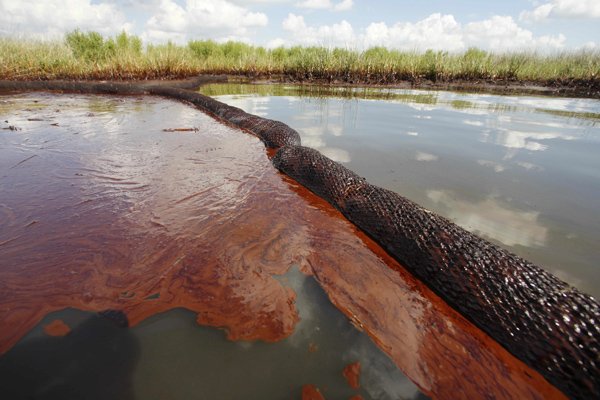MIAMI — Tropical Storm Alex was strengthening fast in the west Caribbean on Saturday, and forecasters said it was too soon to say whether it would hit the oil spill in the Gulf of Mexico.
Hundreds of tourists and residents fled low-lying islands off Belize, and beachgoers were warned to stay out of the water along Mexico’s resort-studded Caribbean coast as rain from Alex began lashing the region.
Interactive
Alex, with maximum sustained winds about 65 mph, was expected to make landfall at Belize by nightfall, cross land and enter the Gulf of Mexico late today. The storm appeared headed west of the oil spill in parts of the Gulf, but meteorologists warned that a storm’s track can quickly change.
The U.S. National Hurricane Center said Alex at 10 p.m. CDT was centered near latitude 17.7 north, longitude 88.4 west, or just 20 miles northwest of Belize City and 205 miles southeast of Campeche, Mexico, and heavy rains were spreading into north Guatemala and Mexico’s Yucatan Peninsula.
A tropical-storm warning was in effect for Belize and Mexico’s entire Caribbean coastline up to Cancun.
Meteorologists predict that Alex will likely lose strength as it passes over the Yucatan Peninsula, before picking up steam again over the Gulf of Mexico.
The Hurricane Center forecast Saturday night put Alex on a track that would take it through the southwestern Gulf and toward landfall around Veracruz or Tamaulipas state in Mexico - possibly as a hurricane.
Hurricane forecaster Jack Bevens said the storm was not expected to hit the spill that has fouled the Gulf with between 1.64 million and 3.14 million barrels of crude.
He noted, however, that it was too early to say with certainty exactly where Alex will go.
The storm raises concerns over what might happen to efforts to contain the oil in the Gulf of Mexico if BP is forced to abandon the area for a while. An armada of ships is working in the Gulf, where offshore rigs that produce 30 percent of the country’s oil and 12 percent of its natural gas.
“We are monitoring the situation,” said Sheila Williams, a London-based spokesman at BP, in a telephone interview. “There is no imminent threat” to the Gulf cleanup operations, she said.
A cap has been placed over the blown-out undersea well to carry some of the oil to a surface ship, where it is being collected. Some of the oil is being taken to the surface and burned. Other ships are drilling two relief wells, projected to be done by August, and are seen as the best hope to stop the leak.
The Gulf of Mexico is also home to seven of the 10 busiest U.S. ports, according to the Army Corps of Engineers.
“We will have our first real threat to operations, and I am still worried about the oil slick,” Jim Rouiller, a senior energy meteorologist at Planalytics Inc.
Rouiller said a tropical storm or hurricane in the spill area would force all the oil recovery ships to depart, which would mean free-flowing crude from the rig leased by BP.
Rig crews would need to begin preparing to evacuate three to seven days ahead of the storm, U.S. Coast Guard Admiral Thad Allen, the government’s national incident commander, said last week.
Joe Bastardi, chief hurricane forecaster at Accu-Weather Inc. in State College, Pa. said that if the storm does miss the spill area, no one should breathe a sigh of relief, Bastardi said.
“This is a real warning shot that this season isn’t going to monkey around,” Bastardi said. “It is a sign that the pot is bubbling and if it doesn’t boil over in July it will in August.”
Forecasters have said they can’t speculate about what rough weather would do to oil in the water.
Belize officials opened storm shelters in the island tourist resort of San Pedro, as some 1,400 people fled for the mainland by plane and by boat. Torrential downpours and heavy winds were reported on offshore islands Saturday afternoon.
Shelters also opened in Belize City, where motorists formed long lines at gas stations and shoppers stocked up on water, canned food and other emergency supplies amid sporadic rain.
Rough seas halted maritime traffic, and Belize City Mayor Zenaida Moya-Flowers went on national radio to urge boaters to head for safe harbor. Nevertheless, she said, emergency plans were well under way and “we are prepared.”
A storm surge of 3-5 feet was expected along the northern coast and offshore islands, national emergency coordinator Noreen Fairweather said.
Moderate rain was falling along Mexico’s Yucatan Peninsula, and Quintana Roo state authorities said choppy waves made it too dangerous to swim - but otherwise the storm did not pose a significant threat to tourist areas such as Cancun, Cozumel, Playa del Carmen and Tulum.
State Public Safety Director Miguel Ramos Real said 25 fishermen were evacuated and 17 navy personnel were taken to the mainland from a base on Banco Chinchorro, an atoll off the Mexican coast. Three shelters were opened, and ports were closed to small craft.
Information for this article was contributed by Patrick E. Jones and Gabriel Alcocer of The Associated Press and by Brian K. Sullivan, Eduard Gismatullin, Lars Paulsson, Jim Polson and Stuart Biggs of Bloomberg News.
Front Section, Pages 4 on 06/27/2010
